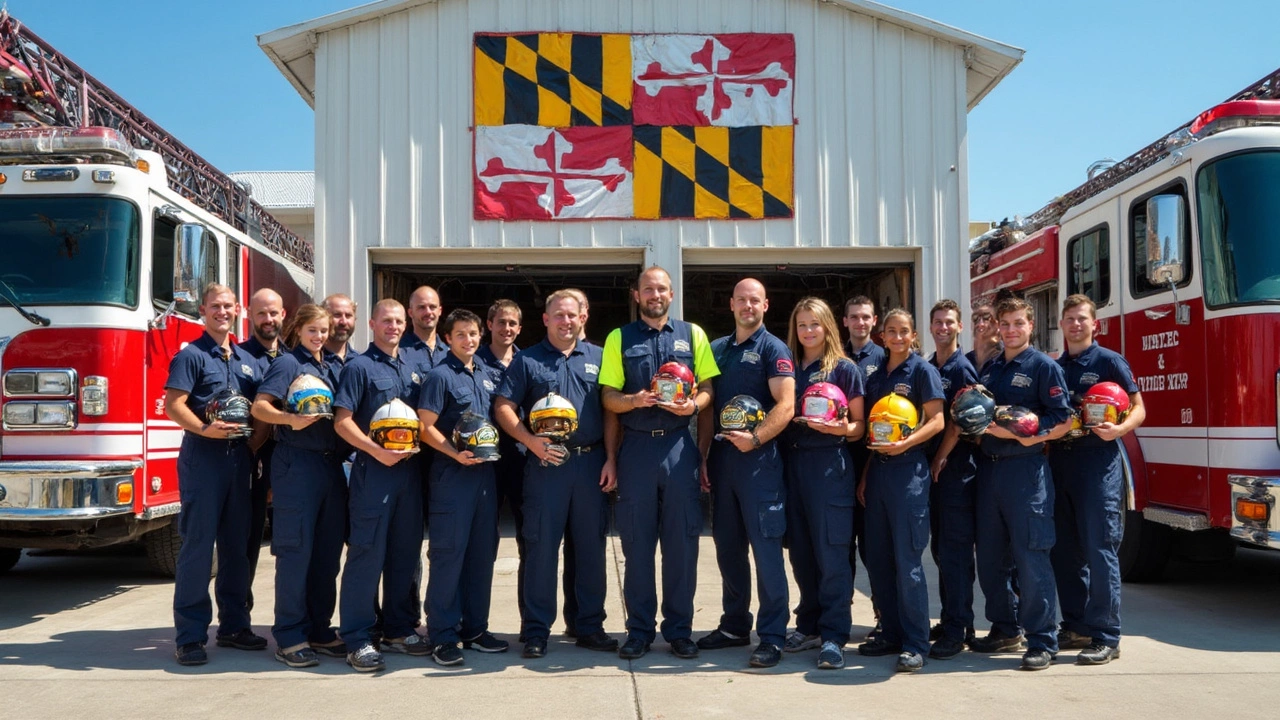Maryland Fire Department: What You Need to Know
If you’re thinking about joining the Maryland Fire Department, you’re looking at a job that mixes physical work, quick decisions, and community service. It’s not just about putting out flames – you’ll rescue people, handle hazardous materials, and support public safety day in, day out. Below, we break down the steps to get in, the training you’ll face, and how to move up the ladder.
Getting Started with the Maryland Fire Department
The first hurdle is the application. Most stations require a high school diploma or GED, a clean driving record, and a basic fitness level. You’ll fill out an online form, attach a resume, and then wait for a written test. The test covers reading comprehension, math (usually basic arithmetic), and situational judgment – think “what would you do if a building is on fire and people are trapped?”
Pass the written test and you’ll be invited to a physical ability test (PAT). This includes a stair climb, hose drag, equipment carry, and a timed run. Don’t worry if you’re not an athlete; regular cardio and strength workouts can get you ready in a few weeks. Many local gyms offer firefighter‑specific classes that simulate these tasks.
After the PAT, the department conducts a background check and drug screening. If everything checks out, you move on to the fire academy. In Maryland, the academy typically lasts 12‑14 weeks, combining classroom lessons with hands‑on drills. You’ll study fire behavior, building construction, emergency medical care, and hazardous material response. Real‑world scenarios, like simulated structure fires, give you a taste of what the job feels like.
Career Growth and Training Opportunities
Finishing the academy earns you the title of firefighter II and a basic salary. From there, you can pursue additional certifications – EMT‑B, HazMat, or specialized rescue courses are common choices. The Maryland Fire and Rescue Institute offers these courses on a rolling schedule, so you can keep learning while on the job.
Promotion to lieutenant, captain, or chief isn’t just about seniority. It requires demonstrated leadership, passing a promotion exam, and often a proven record of advanced training. Many firefighters take night classes for a fire science degree, which can boost promotion prospects and salary.
Safety training responsibility is a big topic in fire services. While the department provides the core curriculum, each station has a designated Safety Officer who ensures everyone follows the correct procedures. As you climb the ranks, you’ll be part of that safety chain, making sure new recruits get proper guidance.
Pay in Maryland varies by county and role, but the average entry‑level salary sits around £28,000–£30,000 per year. Overtime, hazard pay, and pension benefits add to the total compensation. Some stations also offer tuition reimbursement for advanced courses, helping you offset education costs.
Ready to start? Begin with a fitness plan, study basic fire science, and register for the next PAT in your area. The Maryland Fire Department values dedication, teamwork, and a willingness to keep learning. If you bring those qualities, you’re on the right track to a rewarding career saving lives and protecting property.




